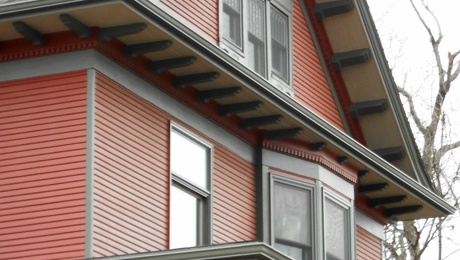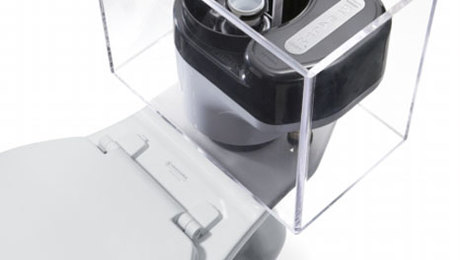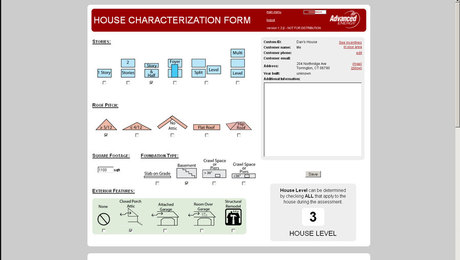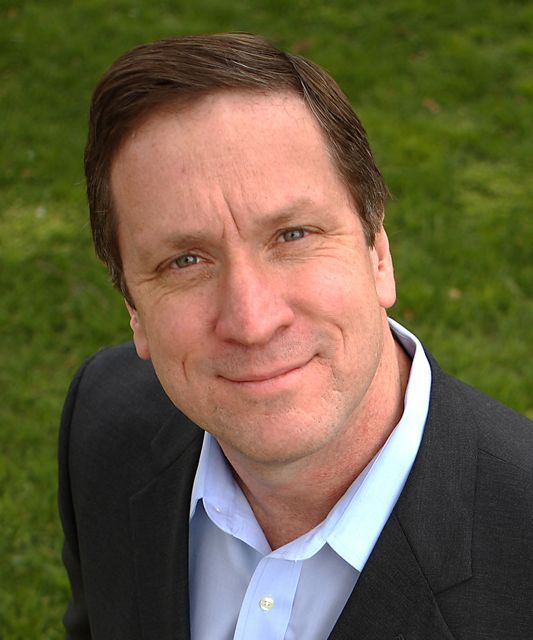
I recently had an opportunity to ask Mr. Fedrizzi a few questions about green building. With his rich history and the role that he has played in the green building movement, it’s always a privilege and an honor to talk with Rick.
With USGBC’s prominent role as a facilitator green building market shift, how do you see the organization assisting in the success of the American Recovery and Reinvestment Act? What are the challenges to the success of this legislation?
USGBC is committed to bringing together the community to share ideas and success stories, which will be fundamental to making the most of the funds allocated in the American Recovery and Reinvestment Act (ARRA), which we see as an important down payment on a new, green economy. Prior to the bill’s passage, we worked closely with Congress to craft significant provisions that directed tens of billions of dollars in funding to green building activities proven to save energy, save money and create jobs – from investing in the weatherization of homes for low-income families, helping make green schools a reality for thousands of children, committing to green building leadership in our federal facilities, and supplying funding to crucial grant programs that aid sustainability efforts at the state and local levels. Since President Obama signed the legislation in February, we launched a multipronged effort to identify and promote ways that state and local leaders and other recipients could maximize the use of recovery dollars to advance sustainability in buildings. We’ve also developed several resources that can help businesses and homeowners figure out how to best access these funds so the funds can be fully deployed. The effort is historic, and it will require commitment from a variety of players, including policymakers, citizens, and practitioners to reinvigorate and transform both our economy and our environment. To learn more about ways to use the recovery funds, visit the U.S. Green Building Council.
How do you see the American Clean Energy and Recovery Act (ACES) taking shape before and after it hits the Senate in September? What role could the USGBC play in supporting that legislation once it passes in it’s final form?
Climate and energy legislation represents an historic opportunity to accelerate the uptake of green building. The bill’s very foundation– a cap and trade system for greenhouse gas emissions and a energy efficiency and renewable electricity standard – provides the necessary framework for dramatically shifting how we make decisions about energy, a shift that will spur innovation, investment and uptake of energy efficiency and renewable energy. We know, according to McKinsey & Co., that we’re squandering $130 billion annually by not harnessing the engine of green, energy-efficient buildings. ACES includes several initiatives or provisions supported by or developed in consultation with USGBC to incentivize and accelerate the economic and environmental benefits of green building across the country. Given the potential of energy efficiency in buildings and other stationary sources to save $1.2 trillion and create up to 900,000 new jobs by 2020(McKinsey), advancing a climate bill that increases our nation’s energy efficiency in buildings is an economic, environmental and national security imperative. As the Senate negotiates the final form of its version of climate change legislation, we continue our work to strengthen and shape provisions that support, incentivize and scale green building while engaging the community to support its passage.
There has been a lot of focus on green building these past few years. Do you think the discussion will be broadened, with greater emphasis on communities, towns, and cities?
Last year, for the first time, half the world’s population lived in cities. That figure is expected to grow to 70 percent by 2050. Today, cities occupy just 2 percent of the world’s landmass, but are responsible for more than two-thirds of global energy use and greenhouse gas emissions. Current urban development patterns will not sustain the projected growth: They must be reinvented.
So yes, and we welcome this broader focus that looks beyond the building footprint to how it both impacts and contributes to the quality of life in the community where it’s located. The USGBC has been working with the Natural Resources Defense Council and the Congress for the New Urbanism to create LEED for Neighborhood Development, the first national program for green neighborhood design and construction. LEED-ND will be hugely important in the marketplace because it takes all we’ve learned about buildings and delivers it on a larger scale, and so much of what we’ve learned is that quite a bit of what we need to do is best delivered not so much on a building by building scale, but at the neighborhood level. Every building doesn’t necessarily need its own power plant, but something for a city block or a group of buildings can sometimes be more efficient and less resource draining than pulling all your energy off a national grid. LEED ND helps us explore that.
We’re also convinced that the city scale thinking and coordination has the probability to create the greatest impact the fastest. In that regard we’ve been working with the Clinton Climate Initiative to develop The Climate Positive Development Program, which was created to meet the dual challenge of rapid urban growth and climate change by setting a new global benchmark for leadership in large-scale urban development. The program supports the development of large-scale urban projects that will demonstrate that cities can grow in ways that are “climate positive,” striving to reduce the amount of on-site CO2 emissions to below zero..The Climate Positive Development Program will drive market transformation by integrating and deploying CCI’s full range of ‘Cities’ programs – including building retrofit, waste management, outdoor lighting, transportation, and other areas – into a focused partnership with 16 participating large-scale urban developments on six continents.
Are you surprised that the USGBC is continuing to grow at such a rapid pace? How do you explain that in light of the economy and downturn in construction?
I think that in a troubled economy, success comes from finding opportunities among challenges. Green building is even more important in light of the current economic challenges. We know that buildings in the U.S. are responsible for 39% of CO2 emissions, 40% of energy consumption, 13% water consumption and 15% of GDP per year, which makes green building a source of significant economic and environmental opportunity. The Center for American Progress says that greater building efficiency can meet 85% of future U.S. demand for energy, and a national commitment to green building has the potential to generate 2.5 million American jobs. And as I mentioned earlier we know that 900,000 new jobs are possible by 2020 if we fully advance energy efficiency in our buildings.
People want to solve these issues – the economy, climate change, energy dependence. And they know better buildings are a solution – a specific, uncomplicated, straightforward immediate solutions, and they know that USGBC has a reputation for getting things done. We give our members and the industry a place to convene. Together we educate, we advocate, we press forward for implementing practical solutions that raise the bar, but don’t try to go the distance in one fell swoop. Every time we’ve raised the bar, the market has responded, and that gives us the room to raise the bar a bit more. I think our members and the industry see this and appreciate this social capitalist approach we take.
When I hear negativism about the USGBC or the LEED rating systems in the LEED courses that I am teaching or elsewhere, I am constantly telling people that the USGBC folks listen to constructive feedback. Is the recent addition of performance requirements to LEED V3 an initiative that was in the cards for USGBC for some time, or was it in response to criticism within the last couple of years?
LEED has been in use only nine years, and yet we’re already on the third significant evolution of the rating system precisely because the market keeps telling us what they need. Though we all might want to go faster, getting to consensus, and developing something that moves us forward but doesn’t go so far that it leaves the market behind takes some time. We began working on LEED 2009 in 2006, and the performance gap—or the disconnect between the modeling that occurs in the design and construction phase and what actually happens in daily operation was one critical issue we felt had to be part of the next evolution of the rating system, and — equally importantly – that the market was ready for it. The LEED Steering Committee developed the new Minimum Program Requirements, or MPRs, as a mechanism to help close that performance gap. One of the MPRs requires that USGBC access building energy and water use data was envisioned by the LEED Steering Committee to let owners and operators know how their building is performing, while helping to inform future versions of the rating system. And we’re not done – we’re in the process of rolling out a program that will further enhance our data collection and diagnostic efforts that will help individual building owners and the industry at large better calibrate their ongoing needs in an effort to achieve continuous performance.
I am really enjoying creating the USGBC course for REGREEN Home Renovation Guidelines. I firmly believe that this class is a game changer for the USGBC and its educational offerings given the current emphasis on energy efficiency and available resources through ARRA. Would you like to see REGREEN evolve into a rating system to add to the impressive LEED library?
We don’t envision REGREEN as a rating system but rather as a collection of tried and true best practices and resources for homeowners to use when implementing home renovation projects. We’ve enjoyed the partnership with ASID and they’ve provided invaluable input into the formation of the nation’s first residential remodeling guidelines. That being said, somewhere down the road, we hope to develop a rating system for existing homes, much like the LEED for Existing Buildings: Operations & Maintenance rating system, that will help ensure that a home is being operated and maintained as energy- and resource-efficient as possible, all the while providing a healthier environment for occupants. Greening America’s 120 million existing homes and making sure any new home construction is green are vital parts of our ability to slow climate change, reduce energy dependence, and provide proven ways for homeowners to save on their energy and water bills.
Web forums are buzzing with complaints about the LEED AP test. Most complaints focus the questions that are easy to look up in a reference book rather than knowledge of green building concepts. How do you respond to these observations?
First let me describe how the tests were developed. All LEED Professional Credentialing exams — the LEED Green Associate Exam and the various LEED AP specialty exams are specifically designed to test a candidates knowledge in three areas:
Recall of the factual material that is presented in a similar context to the exam references.
Application of this learning to problems or scenarios so the candidate can demonstrate their ability to solve these issues using familiar principles or procedures described in the exam references.
Analysis that assesses a candidate’s ability to break the problem down into its components to create a solution.
Once developed, the validity and reliability of the exam were subject to extensive independent analysis of each individual question and the exam as a whole. Each exam question was developed and validated by global work groups of Subject Matter Experts, referenced to current standards and resources, developed and monitored through psychometric analysis, and found to satisfy the test development specifications of a job analysis.
We’re actually pretty excited about how the new credentialing structure has been received. The LEED Green Associate credential is an incentive for more people to become knowledgeable about green building, even if they never design a plan, swing a hammer or spec a window. But these people — lawyers, marketers, general business people – they are as important to market transformation as architects and engineers and designers. For these latter categories, the specialty exams give them ample opportunity to demonstrate their broader expertise.
We’ve gone from about 55,000 LEED APs this time last year, to nearly 140,000 thousand at the end of July. That’s an astonishing growth curve, and we want it to continue because it indicates our ability to move this market transformation forward faster.
Many residential builders point out that the ICC-700 standard is much more builder-friendly than LEED for Homes. Is USGBC interested in finding ways to make LEED for Homes more builder-friendly?
Less than 1 percent of the U.S. housing stock has been certified under any green residential program, so USGBC’s vision is to help the residential marketplace simply build more green homes – irrespective of which standard is used. While LEED for Homes is a program designed largely for the leaders and innovators of the market, other programs – such as ICC-700 – offer other builders a viable starting point as they move up the green continuum. To help promote this vision, USGBC has working partnerships with homebuilding associations and local green building programs across the U.S. that educate homebuilders and homebuyers on the key differences between available green home certification programs. This allows the local markets to better understand their available green options without going through the time-consuming process of a rating system modification.
Silly question: If you had three wishes, what would they be?
That when we get to Greenbuild in Phoenix Nov. 11 -13, that the market will have begun to turn, and that we can take pride in our industry’s contribution to that thru energy efficiency and new jobs.
That every person who stands on the sidelines to green-bash is required to actually offer a constructive solution.
That sooner rather than later we start to see green buildings evolve into regenerative, restorative buildings that generate their own energy.
For more Green Building ideas, visit Rob Moody’s blog at Green Building Advisor.
Fine Homebuilding Recommended Products
Fine Homebuilding receives a commission for items purchased through links on this site, including Amazon Associates and other affiliate advertising programs.

Affordable IR Camera

Reliable Crimp Connectors

Handy Heat Gun
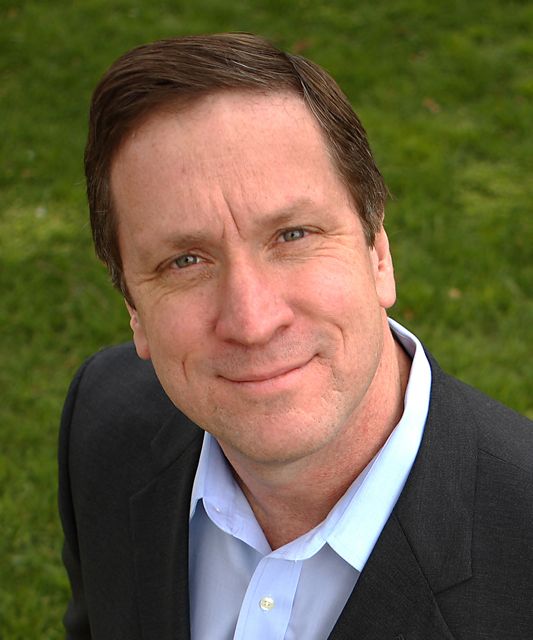
USGBC President and CEO, Rick Fedrizzi.


